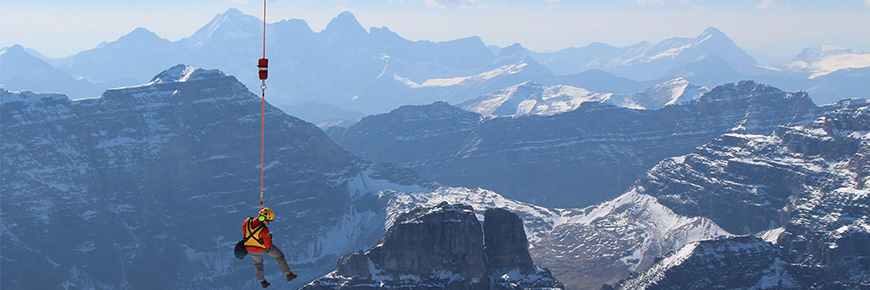
Safety and guidelines
Banff National Park
We rarely head out for an adventure with the expectation that something will go wrong, and most times everything will go right. But sometimes the unexpected happens. Natural hazards are a part of the national park experience. You can reduce the impact of an unfortunate circumstance by being well informed and well prepared.
Important bulletins
Before visiting the park, review the important bulletins for current warnings, closures, and restrictions that may affect your trip.
Water safety
Ensuring that you have the proper safety equipment and are familiar with your chosen activity is the best way to stay safe on the water.
Park regulations
Banff National Park is a protected area with rules that need to be followed. Learn more about how you can be a responsible park visitor.
Weather conditions
Learn about what to expect and plan for when it comes to weather in Banff National Park.
Avalanche conditions
Know before you go, don't take risk! Thousands of avalanches occur throughout Banff National Park every year.
Trail Condition Report
Check the Trail Conditions Report prior to heading into the national park.
Wildlife safety
How responsible behaviour affects the survival of wildlife and helps ensure your safety.
Mountain safety
Safety information that will help visitors travel safely in the backcountry of the Mountain National Parks.
Driving
A network of paved parkways brings visitors up close with high-mountain scenery, turquoise lakes, glaciers and wildlife.
For general information on how to stay safe when enjoying the outdoors visit AdventureSmart.ca.
Safety is everyone's responsibility. At Parks Canada, we do our part to make sure you can have a safe visit by assessing the risks, managing hazards, and making sure that safety information is freely available to everyone. You can do your part by seeking out the information you need to stay safe and make well informed decisions while enjoying these special places. Visit our websites and stop at a Visitor Centre for the most up to date information. Make sure you are fully prepared for whatever activities you choose to participate in so you can have a safe, enjoyable and memorable visit.
In case of emergency:
Dial 911. Cell coverage is limited in Banff National Park.
Cell phones:
Some cell phones work at some roadside locations. Check with your carrier to see if you have coverage in the area.
Backcountry beacons:
Devices such as "SPOT" or "inREACH" and satellite phones are often the only devices that work in the backcountry. Your adventure is not the place to learn how to use your emergency device. Be familiar with it and understand the difference between the “SOS/Emergency” and “Messaging” functions. Pre-enter your messages and tell your contact person how to reach Parks Canada in case of an emergency.
To report wildlife:
Identify the species with care and note the animal’s description, behaviour and location. Call Park Dispatch at 403-762-1470. Available 24 hours a day, 7 days a week.
- Date modified :